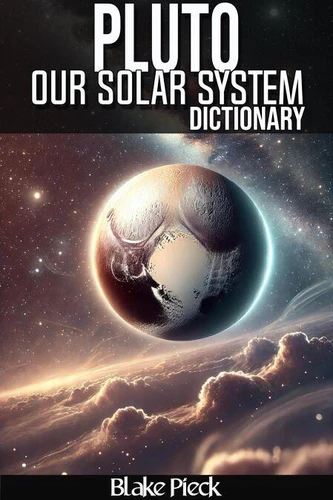Pluto Dictionary - Our Solar System. Grow Your Vocabulary
Par :Formats :
Disponible dans votre compte client Decitre ou Furet du Nord dès validation de votre commande. Le format ePub est :
- Compatible avec une lecture sur My Vivlio (smartphone, tablette, ordinateur)
- Compatible avec une lecture sur liseuses Vivlio
- Pour les liseuses autres que Vivlio, vous devez utiliser le logiciel Adobe Digital Edition. Non compatible avec la lecture sur les liseuses Kindle, Remarkable et Sony
 , qui est-ce ?
, qui est-ce ?Notre partenaire de plateforme de lecture numérique où vous retrouverez l'ensemble de vos ebooks gratuitement
Pour en savoir plus sur nos ebooks, consultez notre aide en ligne ici
- FormatePub
- ISBN8227280053
- EAN9798227280053
- Date de parution25/02/2025
- Protection num.pas de protection
- Infos supplémentairesepub
- ÉditeurBig Dog Books, LLC
Résumé
Pluto - Pluto, Dwarf Planets, Outer Planets - Pluto was once classified as the ninth planet from the Sun but was reclassified as a dwarf planet by the International Astronomical Union in 2006 due to its small size and inability to clear its orbit of other debris. It is located in the Kuiper Belt, a region beyond Neptune that is populated by icy bodies and dwarf planets. Pluto is composed mainly of rock and ice, with a thin atmosphere that expands as it moves closer to the Sun and freezes as it moves farther away.
Its surface features include large ice plains, mountains, and a heart-shaped region called the Sputnik Planitia. Pluto has five known moons, with Charon being the largest. The planet has an eccentric orbit, which brings it closer to the Sun than Neptune for a brief period, but their orbits are in resonance, preventing any collisions. Pluto was discovered in 1930 by Clyde Tombaugh and is named after the Roman god of the underworld.
Despite its reclassification, Pluto remains a fascinating object of study, especially after the 2015 flyby by NASA's New Horizons spacecraft, which provided detailed images and data.
Its surface features include large ice plains, mountains, and a heart-shaped region called the Sputnik Planitia. Pluto has five known moons, with Charon being the largest. The planet has an eccentric orbit, which brings it closer to the Sun than Neptune for a brief period, but their orbits are in resonance, preventing any collisions. Pluto was discovered in 1930 by Clyde Tombaugh and is named after the Roman god of the underworld.
Despite its reclassification, Pluto remains a fascinating object of study, especially after the 2015 flyby by NASA's New Horizons spacecraft, which provided detailed images and data.
Pluto - Pluto, Dwarf Planets, Outer Planets - Pluto was once classified as the ninth planet from the Sun but was reclassified as a dwarf planet by the International Astronomical Union in 2006 due to its small size and inability to clear its orbit of other debris. It is located in the Kuiper Belt, a region beyond Neptune that is populated by icy bodies and dwarf planets. Pluto is composed mainly of rock and ice, with a thin atmosphere that expands as it moves closer to the Sun and freezes as it moves farther away.
Its surface features include large ice plains, mountains, and a heart-shaped region called the Sputnik Planitia. Pluto has five known moons, with Charon being the largest. The planet has an eccentric orbit, which brings it closer to the Sun than Neptune for a brief period, but their orbits are in resonance, preventing any collisions. Pluto was discovered in 1930 by Clyde Tombaugh and is named after the Roman god of the underworld.
Despite its reclassification, Pluto remains a fascinating object of study, especially after the 2015 flyby by NASA's New Horizons spacecraft, which provided detailed images and data.
Its surface features include large ice plains, mountains, and a heart-shaped region called the Sputnik Planitia. Pluto has five known moons, with Charon being the largest. The planet has an eccentric orbit, which brings it closer to the Sun than Neptune for a brief period, but their orbits are in resonance, preventing any collisions. Pluto was discovered in 1930 by Clyde Tombaugh and is named after the Roman god of the underworld.
Despite its reclassification, Pluto remains a fascinating object of study, especially after the 2015 flyby by NASA's New Horizons spacecraft, which provided detailed images and data.























